-

-
Courses
Find courses by:
Collections
- About
- Donate
- Featured Sites
This is an archived course. A more recent version may be available at ocw.mit.edu.
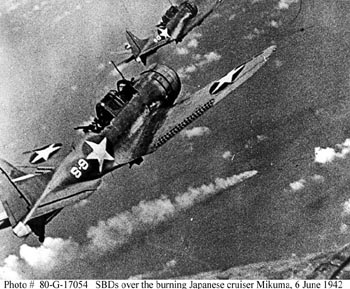
Battle of Midway, June 1942. SBD "Dauntless" dive bombers from USS Hornet (CV-8) approaching the burning Japanese heavy cruiser Mikuma to make the third set of attacks on her, during the early afternoon of 6 June 1942. Mikuma had been hit earlier by strikes from Hornet and USS Enterprise (CV-6), leaving her dead in the water and fatally damaged. Photo was enlarged from a 16mm color motion picture film. Note bombs hung beneath these planes. Photo #: 80-G-17054. Official U.S. Navy Photograph, now in the collections of the National Archives.
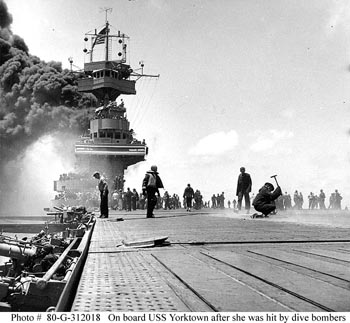
Battle of Midway, June 1942. Photo #80-G-312018 Official U.S. Navy Photograph, now in the collections of the U.S. National Archives.
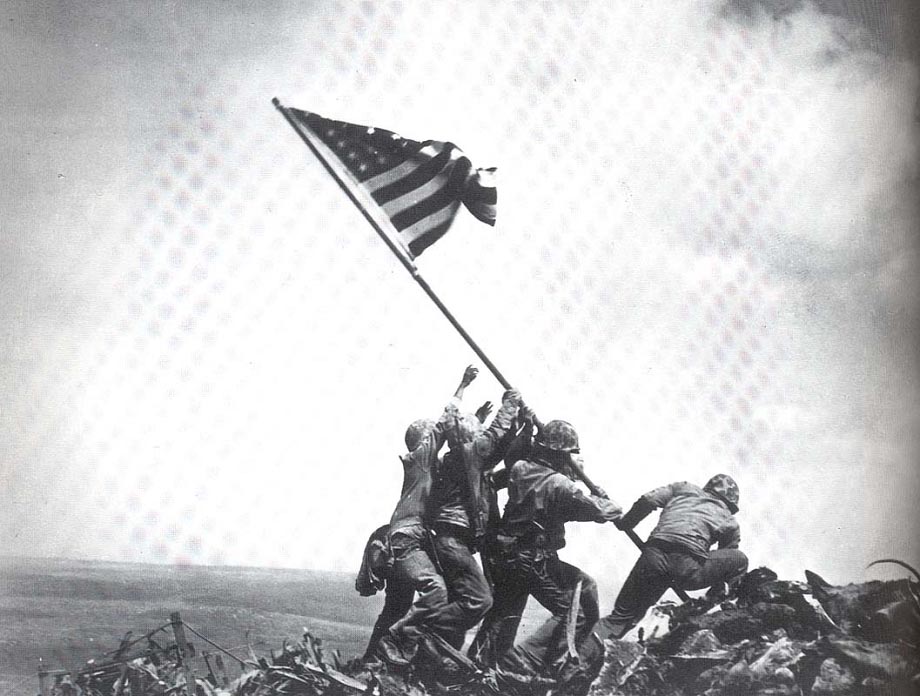
Raising of the American flag after the Battle of Iwo Jima. The American Navy opened fire on the Japanese-held island of Iwo Jima on Feb.19, 1945 signalling the beginning of the D-Day invasion in the Pacific. The island battle ended four days later with the raising of the American flag. Courtesy National Archives, Still Picture Branch (W&C, no. 1221).
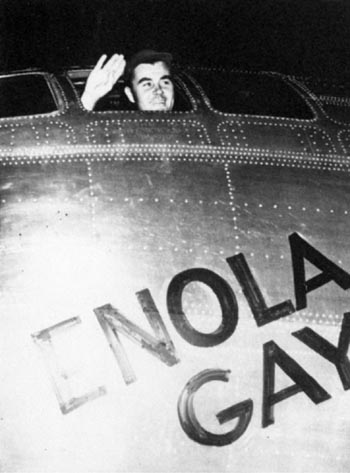
Col. Paul W. Tibbets, Jr., pilot of the ENOLA GAY. Col. Paul W. Tibbets, Jr., pilot of the ENOLA GAY, the plane that dropped the atomic bomb on Hiroshima, waves from his cockpit before the takeoff, 6 August 1945. Army Air Forces. National Archives and Records Administration.
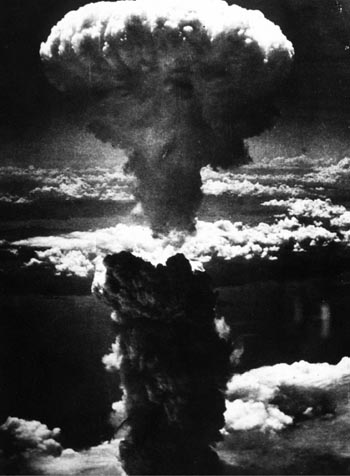
Bombing of Nagasaki. A dense column of smoke rises more than 60,000 feet into the air over the Japanese port of Nagasaki, the result of an atomic bomb, the second ever used in warfare, dropped on the industrial center August 8, 1945, from the US B-29 Superfortress. National Archives and Records Administration.
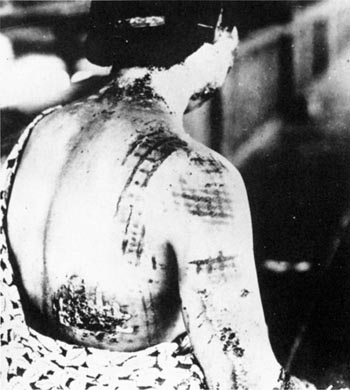
Atomic bomb injuries. The patient's skin is burned in a pattern corresponding to the dark partions of a kimono worn at the time of the explosion. Japan, ca. 1945. National Archives and Records Administration.
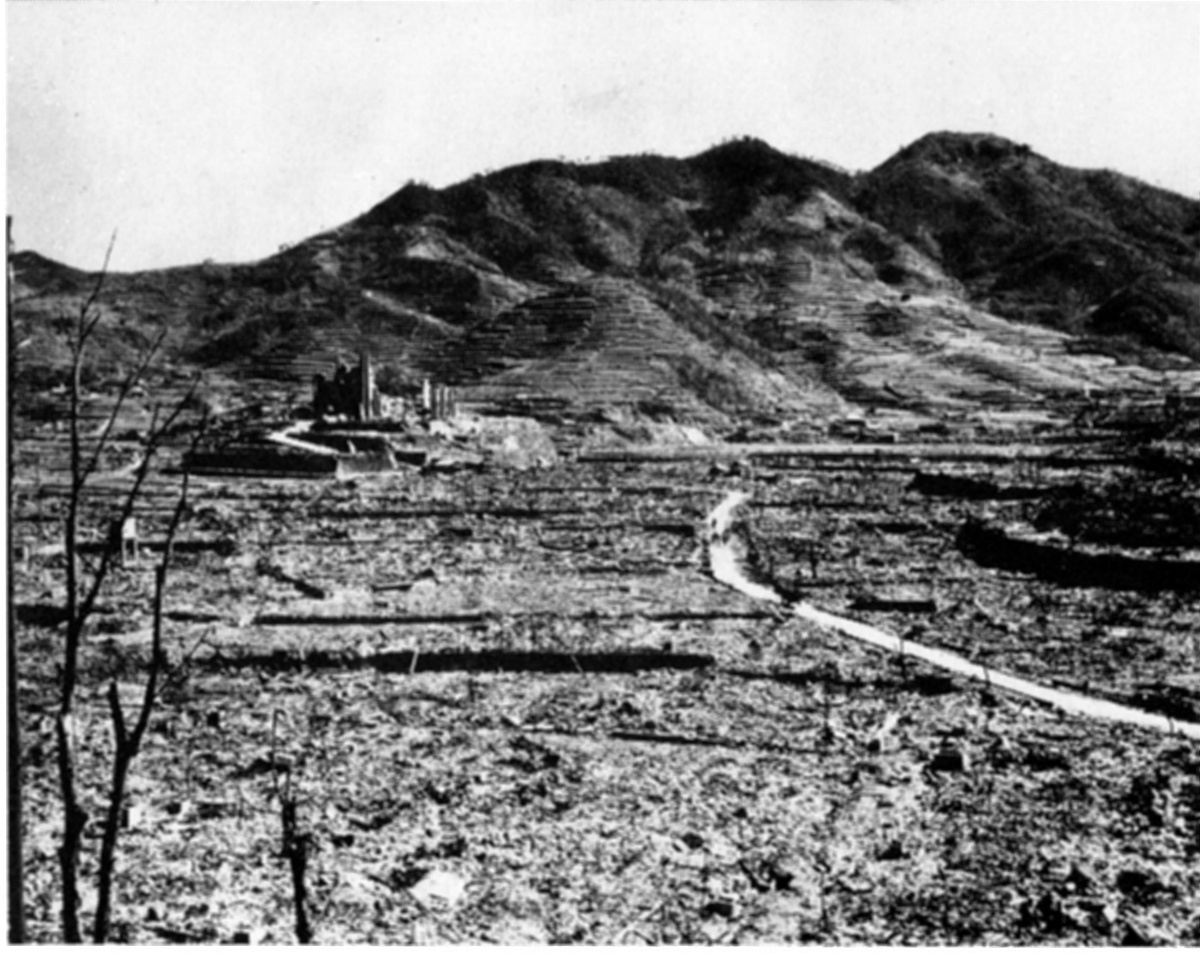
Aftermath of Nagasaki bombing. Roman Catholic Cathedral in background of hill, Nagasaki, ca. 1945. National Archives and Records Administration.
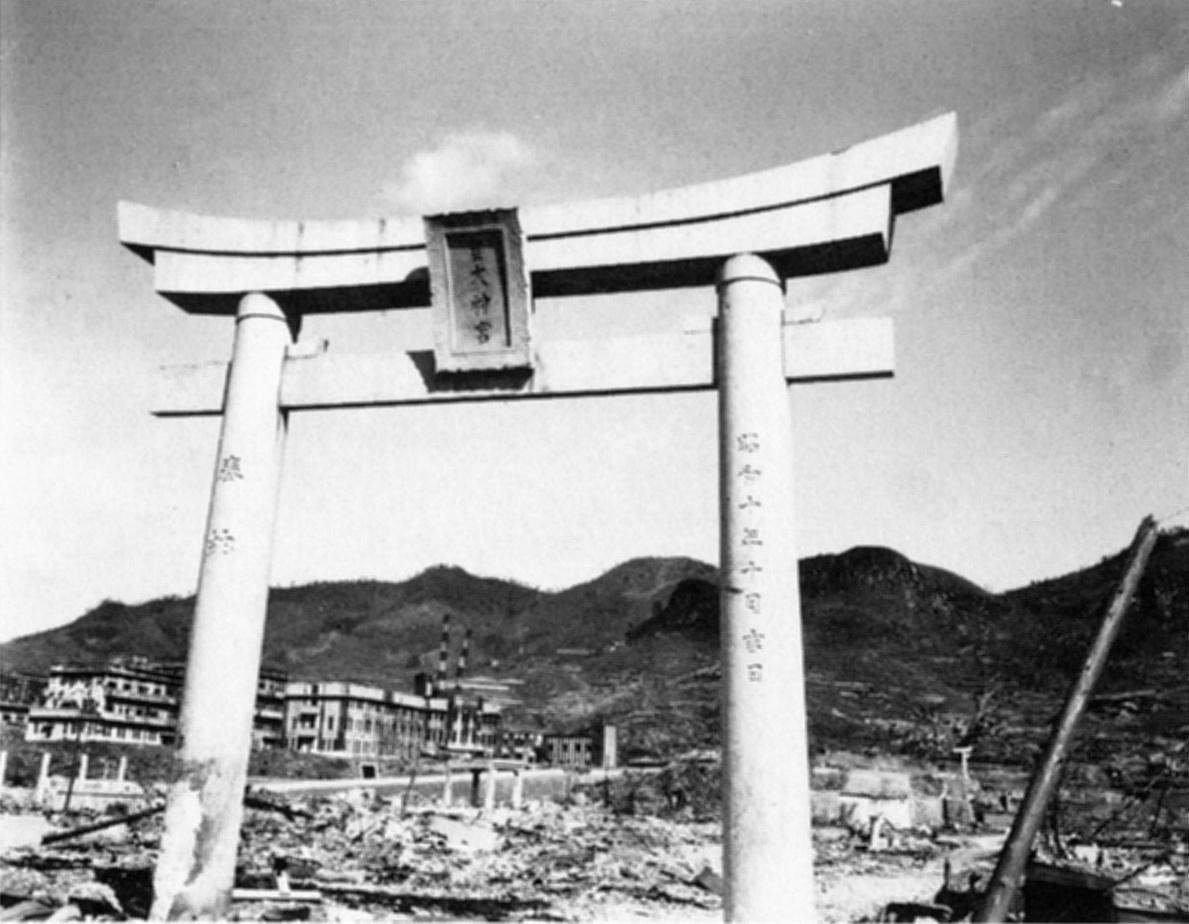
All that is left of one Shinto shrine in Nagasaki. "All that is left of one Shinto shrine in Nagasaki. The arch is made of elements. This plus the fact that the blast could go through and around the structure, enabled it to escape destruction." Japan, October 1945. Lt. R. J. Battersby. National Archives and Records Administration.

Surrender ceremonies on the USS MISSOURI. Gen. Douglas MacArthur signs as Supreme Allied Commander during formal surrender ceremonies on the USS MISSOURI in Tokyo Bay. Behing MacArthur are Lt. Gen. Jonathan Wainwright and Lt. Gen. A. E. Percival. September 2, 1945. Lt. C. F. Wheeler. National Archives and Records Administration.
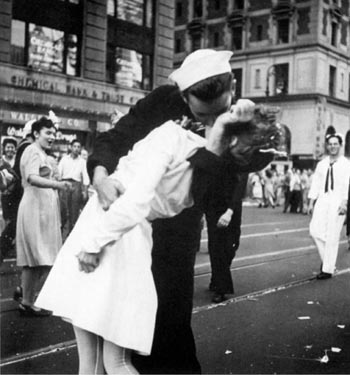
Celebrating the surrender of Japan. "New York City celebrating the surrender of Japan. They threw anything and kissed anybody in Times Square. August 14, 1945." Lt. Victor Jorgensen. National Archives and Records Administration.